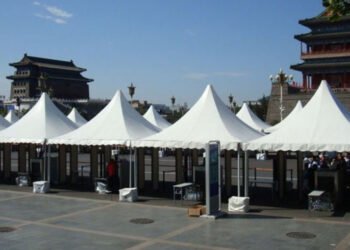Our capacity to see in low- and no-light situations has been revolutionized by night vision goggles, which offer vital advantages in a variety of fields, ranging from military operations to wildlife monitoring and search and rescue efforts. It’s important to comprehend the night vision goggles’ major parts and how they combine to deliver improved visibility in the dark to fully appreciate how they function.
The Night Vision Goggles’ Brain: The Image Intensifier Tube
The image intensifier tube is the main component of night vision goggles. With the use of this amazing technology, any kind of light—moonlight, stars, or even ambient infrared light—can be amplified and converted into a visible image. A photocathode, microchannel plate, and phosphor screen are some of the essential parts of the image intensifier tube.
Photocathode: The photocathode is where the process starts since it transforms incoming light photons into electrons. When photons impact the photocathode, they cause the emission of electrons in a ratio based on the brightness of the incoming light, which is known as photoemission.
Electron Accelerator and Microchannel Plate (MCP): After the photocathode, the electrons are produced and accelerated to travel through the MCP. Numerous small channels with secondary electron emission surfaces may be seen throughout this plate. An enormous increase in the number of electrons occurs when they go through these channels, where they multiply through a cascading process.
Phosphor Screen: Following the end of the electron cascade, the electrons hit a phosphor screen, which causes them to produce visible light. This light is then transmitted, creating a picture that resembles the original scene but is now considerably brighter and visible to the wearer.
Gathering Ambient Light with an Objective Lens
To capture ambient light and route it towards the image intensifier tube, the objective lens of night vision goggles plays a crucial function. To maximize light transmission and reduce glare, this lens is often coated with anti-reflective coatings, ensuring that the photocathode receives the maximum amount of accessible light.
Focusing the Image with the Eyepiece and Ocular Lens
The enhanced picture created by the image intensifier tube is focused by the eyepiece and ocular lens. They make it possible for the wearer to comfortably watch the picture. The eyepieces of contemporary night vision goggles are frequently movable to accommodate various users and offer diopter adjustments for the best possible focus.
Power Supply: Providing Electrical Energy
To function, night vision goggles need electricity. Batteries are often used to power them, and depending on the model, the kind and lifespan might differ. A connector for connecting an external power supply or infrared (IR) laser illuminators may be included on some goggles.
Comfort and Robustness in Housing and Mounting Hardware
In addition to safeguarding the fragile parts of the night vision goggles, the housing provides stability and comfort for the user. Goggle housings are made to be portable, strong, and resistant to the elements. They frequently include movable straps or headpieces to keep the goggles in position while being worn.
To sum up
To give improved sight in low light, night vision goggles are complicated gadgets that depend on several essential components. To fully appreciate night vision technology, one must have a thorough understanding of these elements.












